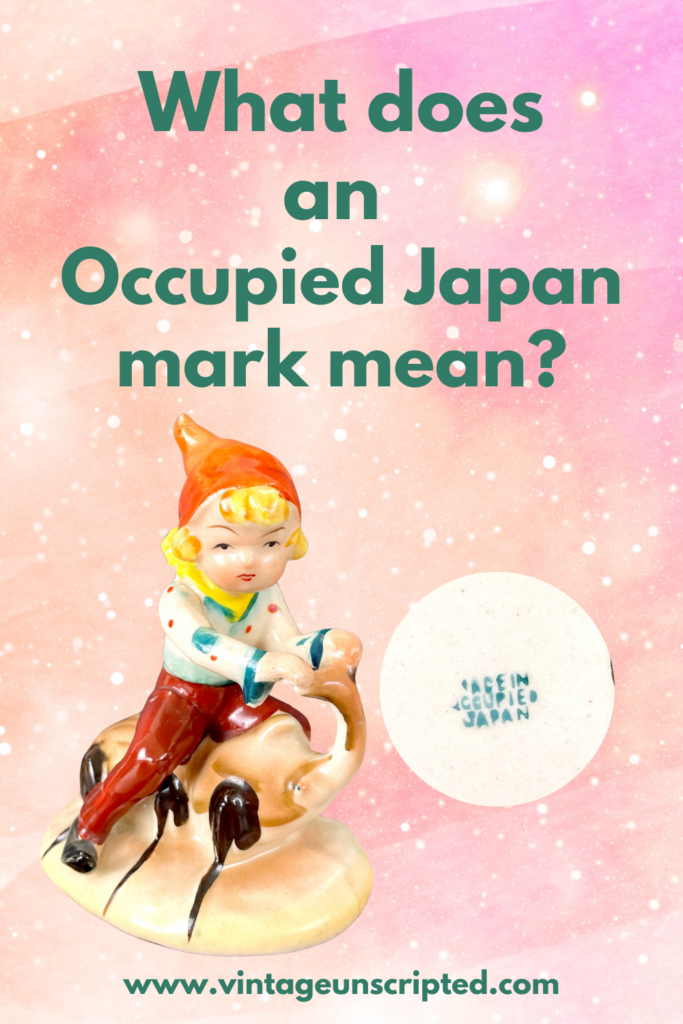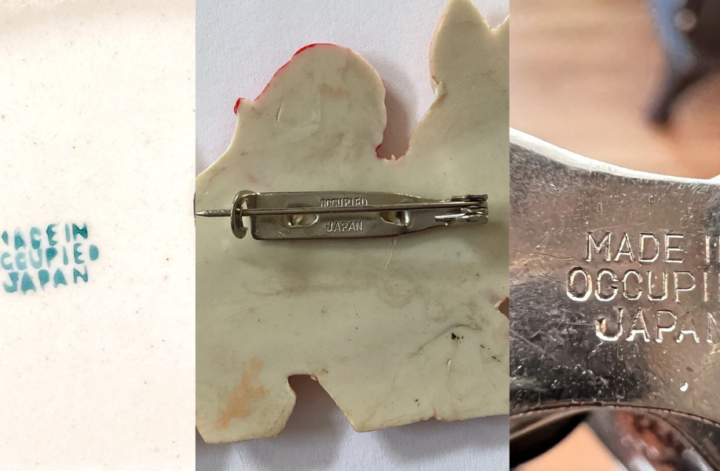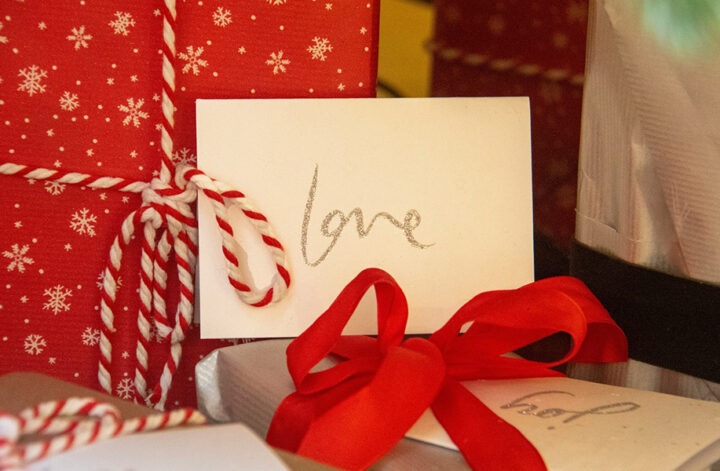When you find a vintage piece marked with “Occupied Japan,” it’s easy to figure out when it was made because the mark has a historical context. It was used between 1945-1952 when the Allies of WWII occupied Japan after the surrender. In reality, the date range can be further narrowed. The Supreme Commander of Allied Powers required the marking in a document dated February 1947. That requirement was removed in December 1949, but many continued to use it until 1952.
Imported goods bearing the mark include most kinds of consumer goods, including textiles, books, toys, cameras, and household items of all kinds. The most common pieces found in the wild are jewelry, china and small decor pieces, many of which are novelty to medium quality. You’ll find paper labels, cloth tags, molded marks and backstamps.
Believe it or not, there are actually fake marks out there. These aren’t from the era when it was actually used. They are from decades later, when collecting “Occupied Japan” was trendy, so demand was high. High demand means there are financial incentives to produce fakes. One tip to tell true from fake marks on china and porcelain is that true marks are always under the glaze and fake marks are not. Unless, of course the bottom is unglazed.
Like all vintage, the value of “Occupied Japan” marked goods varies depending on quality, condition, scarcity and demand. The mark meant more to collectors in the 1970s, who might have remembered the pieces from their parents and grandparents houses. It is still of interest to buyers who like history, but the demand is not as high as it was 50 years ago.
We took a spin around Etsy to find some interesting pieces from the era…
“Occupied Japan” items found on Etsy
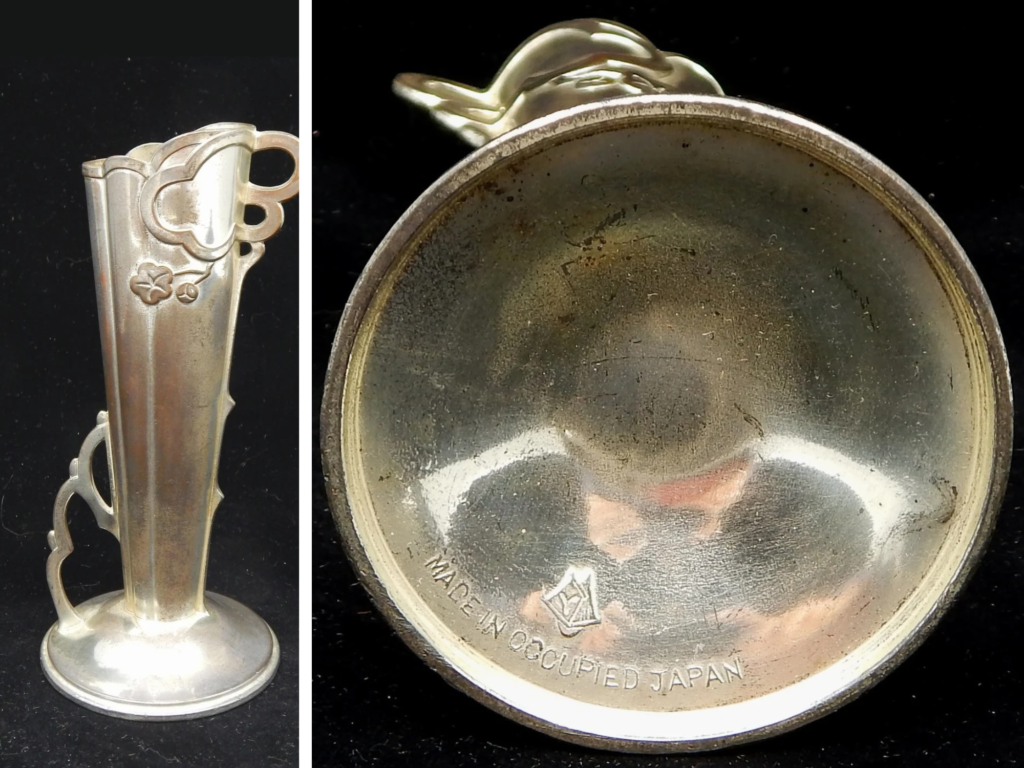
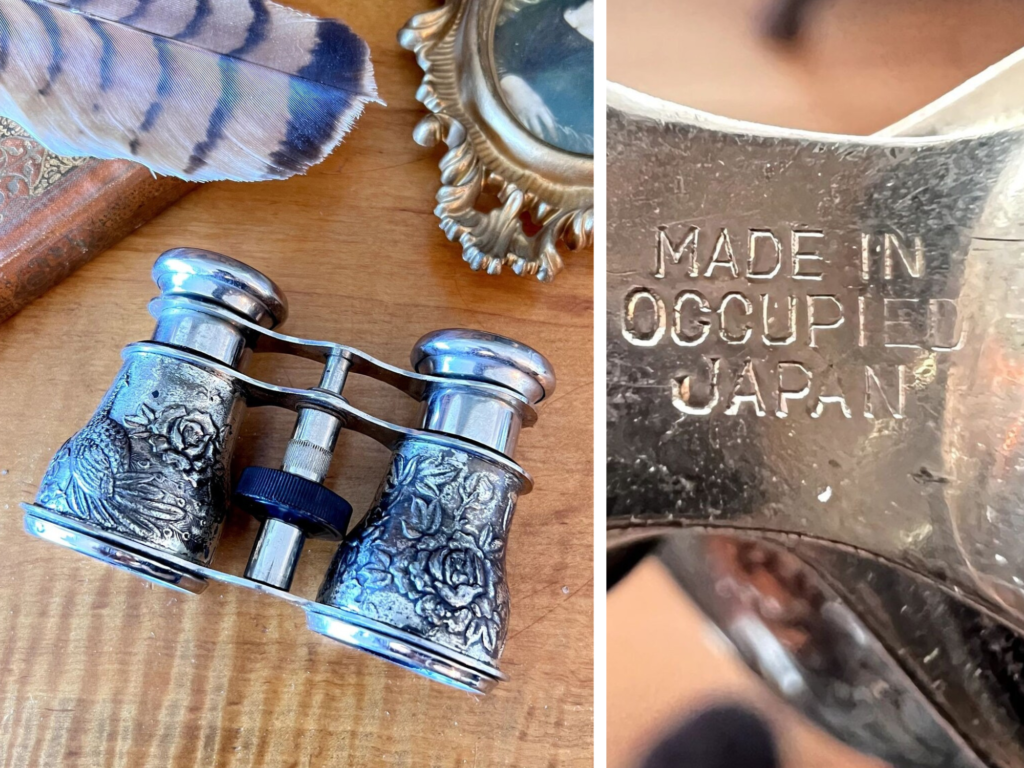
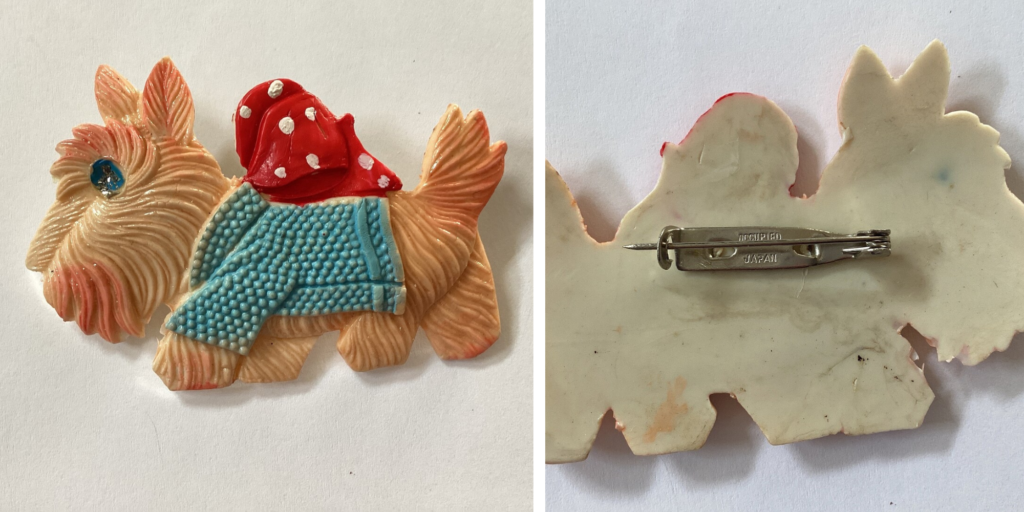
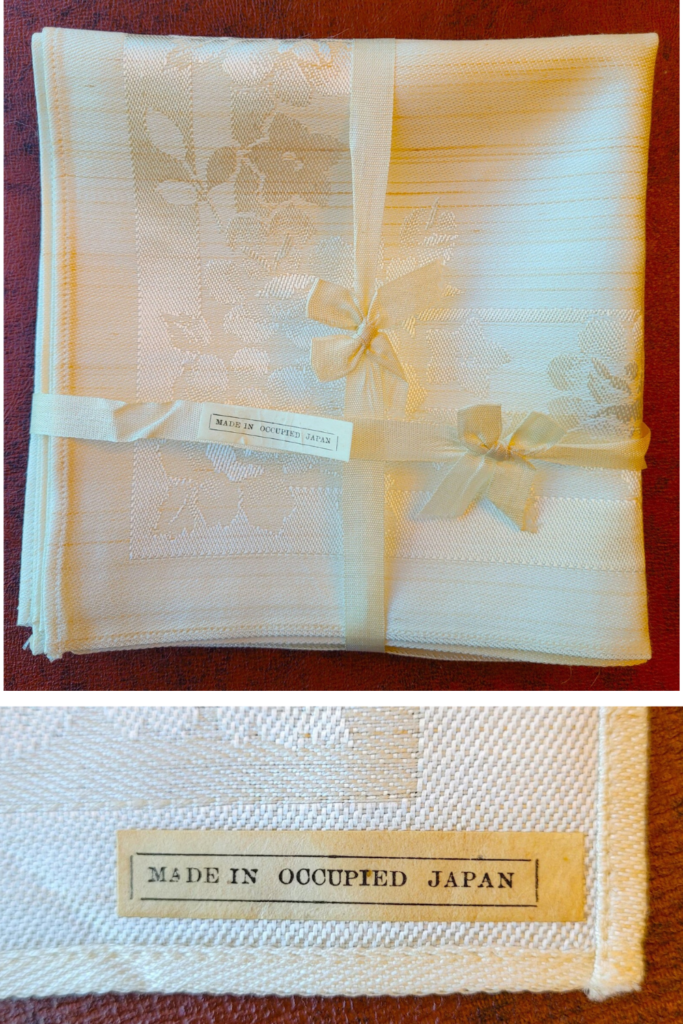
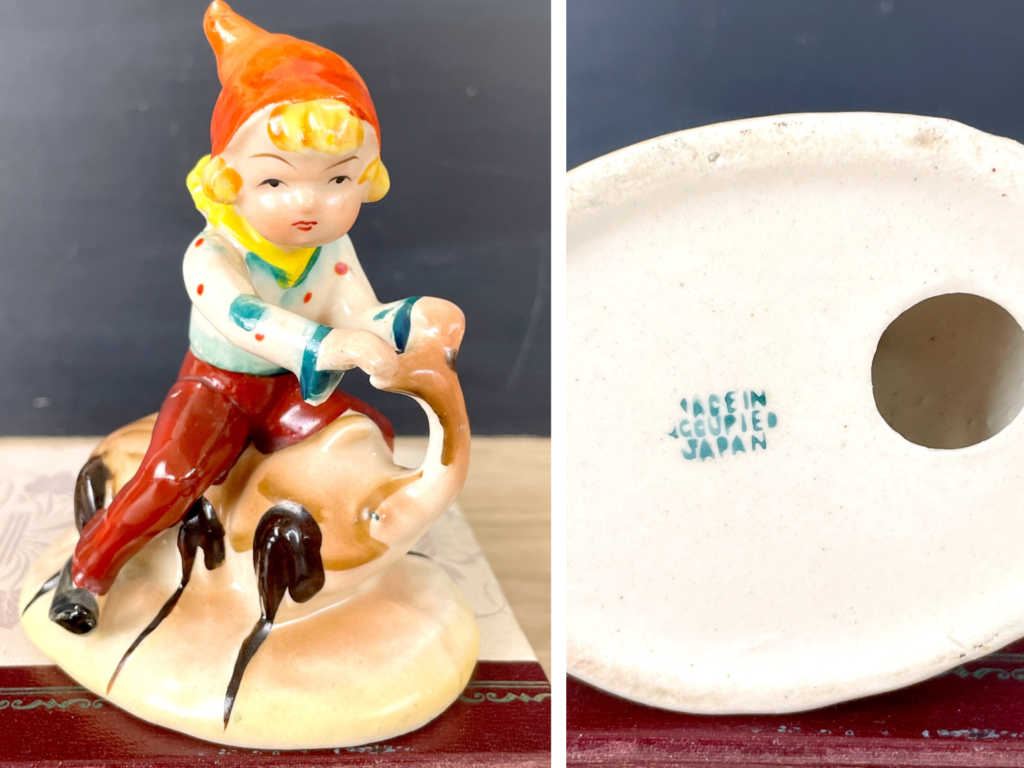
If you’re a collector, there’s a Facebook group dedicated to “Occupied Japan” pieces that you might enjoy.
Two sites were useful in writing this post and have more info
“The Upside-Down World of Occupied Japan” on Southeast Antiquing and Collecting Magazine
“Occupied Japan” on Gotheborg.com
